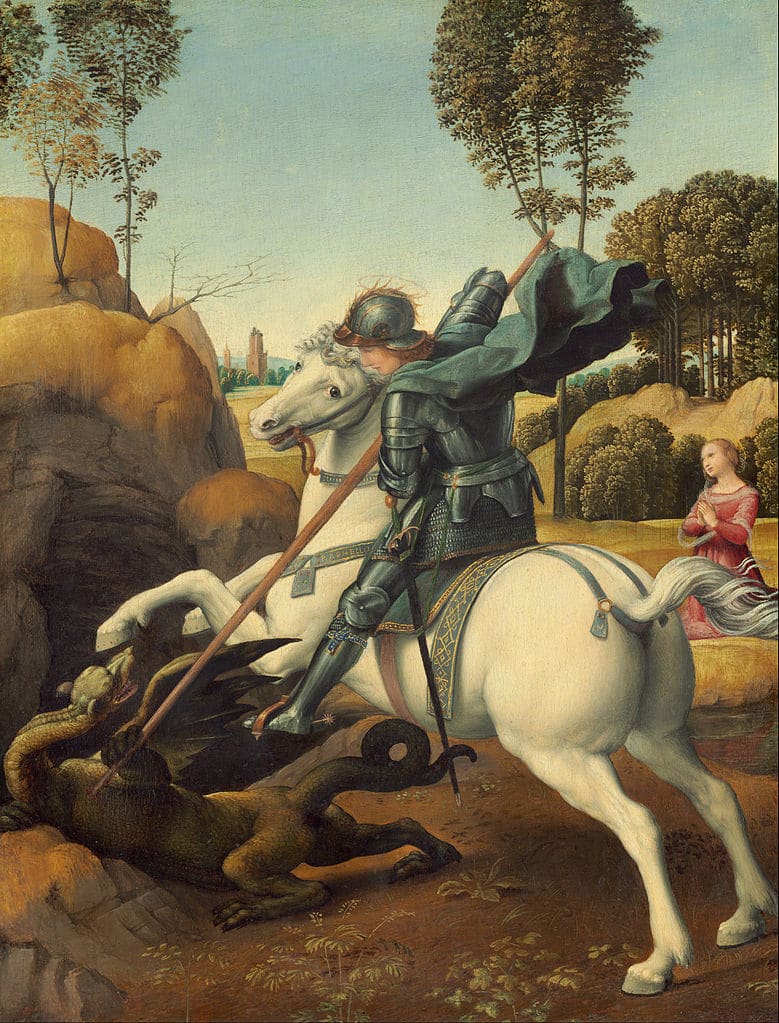
Above the entrance to many a Christian home a stone is set showing the image of St George (called al-Khidr by Muslims) impaling a dragon with his lance, seated on a horse. Each year on May 5th, his name day (Id al-Khidr) is celebrated by both Christians and Muslims in al-Khadr, his purported birthplace near Bethlehem. St George/al-Khidr thus serves as a trait d’union between two religious communities.
In the eyes of Christians, St George was a Christian Palestinian who enlisted in the Roman army, subsequently rose to a high rank and even became one of Emperor Diocletian’s favourites. When the Emperor turned out to be a fanatical supporter of the Roman gods, and started to persecute Christians in his empire, St George rose in revolt.
He was captured and given the choice either to renounce his faith and honour the Roman Gods, or face the consequences of his decision. St George remained true to his faith and was beheaded in Lydda (al-Lidd, Lod, Israel) on 23 April 303, after having endured some gruesome methods of torture (in Lydda, he is remembered on 23 April).
Christian believers revere St George as a martyr for the Christian cause, but also call upon him in times of sickness (he was said to have healing powers) and adversity, in return for certain promises. During the Crusades, St George also grew into a symbol of knightly values, as he was said to have fearlessly saved a virgin from the clutches of a dragon. He also became the patron saint of Great Britain.
Muslims place al-Khidr in a more mystical context. In the Koran, he appears as the instructor of Musa (Mozes), teaching him the art of patience.

